Narrative Writing Teaching Resources
Teaching narrative writing this school year? Explore writing prompts, printable worksheets, storyboards and story maps and more teaching resources created by teachers for primary teachers like you.
This collection of teaching resources aligned with the Australian English Curriculum has been carefully curated by our expert teacher team to ensure every resource is ready to add to your lesson plans and ready for your students!
Is this your first year teaching students about writing narratives? Or maybe you're just looking for some fresh ideas to tackle the topic? Read on for a primer from our teacher team, including a look at how narrative writing is included in year 3 and year 5 students NAPLAN testing.
What Is Narrative Writing?
Narrative writing is the act of writing a story, and those stories can be fictional or non-fiction accounts of something the student has experienced or learned about.
This type of writing is often popular with students as it allows them to use their imagination and creativity!
Narrative Writing and NAPLAN
Are your students sitting NAPLAN this school year? They may be required to show they can write a good narrative!
Narrative writing is one of the three writing genres assessed in NAPLAN — along with persuasive and informative writing.
Your students may be required to respond to a narrative writing prompt that presents a scenario or situation that students will have to use as a starting point for their story. Your class will then have about 40 minutes to plan, draft and edit their narrative story.
NAPLAN assessors will be looking for the following:
- Text Structure and Organisation — Year 3 and 5 students are expected to be able to structure a story with a clear beginning, middle and end. There should be a resolution by the end of the story.
- Characterisation — Characters should be well-developed and relatable.
- Setting — The narrative should describe a setting to immerse the reader in the story.
- Language Use — Year 3 and 5 students are assessed on their ability to use descriptive language to engage the reader.
- Dialogue — If dialogue is included in the story, students need to correctly use quotation marks.
- Grammar — Students are expected to edit and revise their work for errors, showing proper punctuation use and spelling words correctly.
- Narrative Techniques — A good narrative example for NAPLAN will show the student knows how to use techniques such as creating suspense, using figurative language and pacing the story.
Which Elements Does Strong Narrative Writing Always Contain?
Of course, not every student will be sitting NAPLAN this year, and standardised testing is hardly the only reason we need to help students make their narrative writing engaging and strong. So what do you need to know in general? There are certain key elements students need to understand and include, so we've compiled this quick refresher for you.
Plot
The plot of strong narrative writing is crucial — without it, there's no narrative! Keeping the reader interested from the start of a story involves developing the characters well and including conflict.
Structure
The structure of the text is just as important as the plot when writing a strong narrative. Students should be writing texts that include a beginning, middle and end. This can include a clear introduction that sets up the main conflict, a rising action that builds tension and excitement and a resolution that provides closure and ties up loose ends.
Descriptive Language
Teaching students to go beyond overused words like "said" or "nice" and using more descriptive language can help them make their narrative writing stronger. This graphic element of writing works with imagery and figurative language to help readers visualize the story.
Descriptive language helps the reader to visualize the setting and the characters. Sensory details can help kids set the scene in their essay or story.
Point of View
Whether it is written in the first-person, the third-person or flips back and forth, a piece of strong narrative writing has a clear point of view. This helps the reader better understand the narrator or protagonist.
What Is a Hook in Narrative Writing?
One feature of narrative writing you may want to focus on with your students this school year is the art of writing a 'hook' to capture the reader's attention and draw them into the story. This is a compelling introduction that will engage the reader and make them want to keep reading!
There is no one kind of hook! It can be anything from an interesting fact or question to a dramatic opening scene or dialogue.
8 Narrative Writing Examples and Assignments to Share With Your Students
Are you looking for some different examples of narrative writing assignments that will engage your students and inspire them to write? Try these ideas from our teacher team!
- A personal narrative about a special day the student will never forget
- A fictional narrative about a group of friends going on an adventure
- A descriptive narrative that uses sensory details and describing words to create a vivid image of riding a rollercoaster
- A historical narrative that tells the story of their favourite historical figure
- A reflective narrative that explores the writer's thoughts and feelings about going to secondary school one day
- A fantastical narrative that includes magical or imaginary elements like the arrival of a magic hat in the classroom
- A humorous narrative that uses comedic elements to entertain the reader about a time the PE teacher was replaced by an alien
- A collaborative narrative that involves students writing a chapter book in small groups
- Free Plan
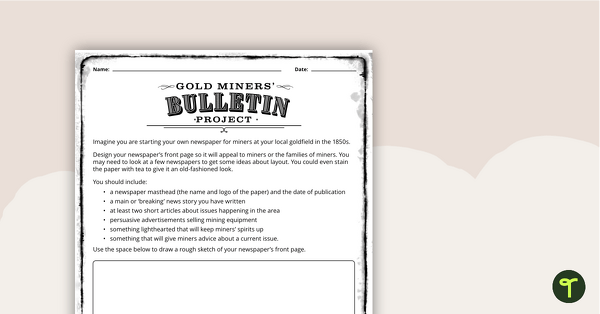
Gold Miners' Bulletin Project
A creative writing newspaper project in which students design and write the front page of an imagined newspaper from the Australian Gold Rush era.
- Plus Plan
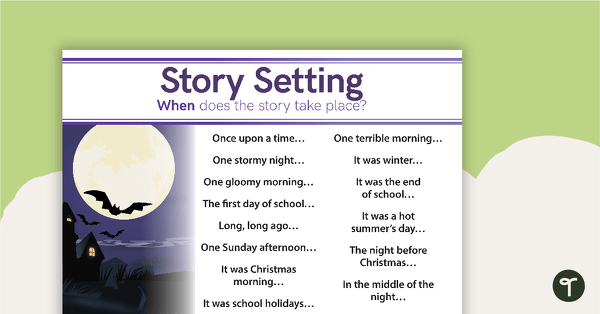
Narrative Setting Prompts Posters
A set of 2 posters giving ideas for the setting of a narrative.
- Plus Plan
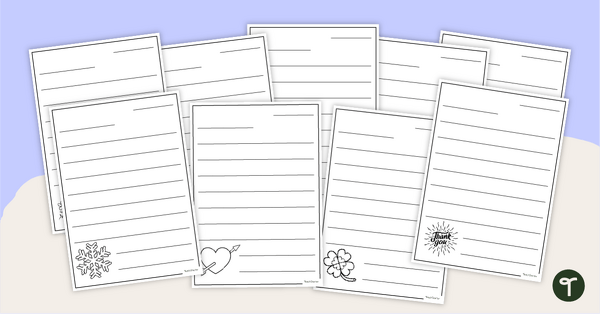
Themed Letter Writing Template Pack
Print and use a letter writing template each month to encourage your students to write friendly letters.
- Plus Plan
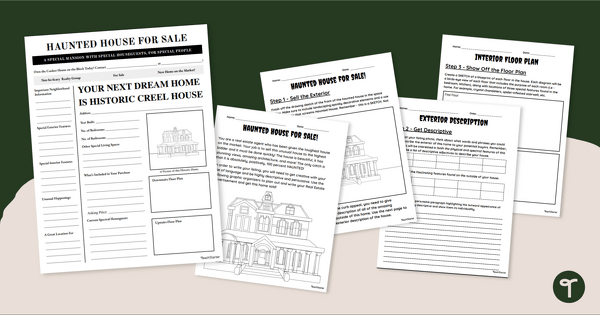
Haunted House for Sale - Creative Writing Activity
Use persuasive language and description writing to sell a haunted house with this exciting Halloween Haunted House Project!
- Plus Plan
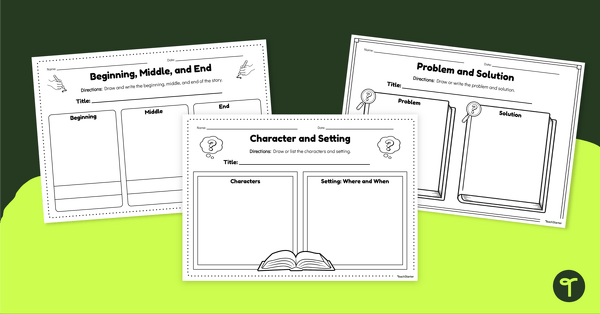
Narrative Elements Graphic Organisers – Landscape
Encourage your students to write and draw about various story elements with this set of differentiated graphic organisers.
- Plus Plan
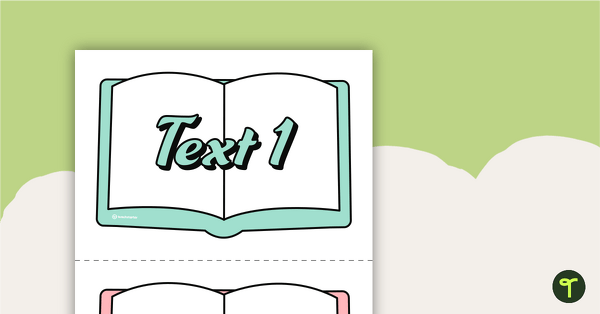
Narrative Writing Bump It Up Wall – Year 6
A visual display for your classroom to help students ‘bump up’ their narrative writing.
- Plus Plan
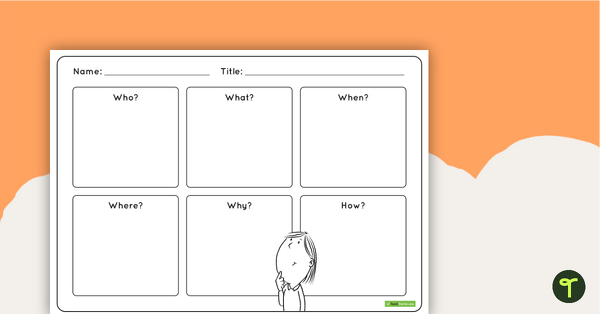
5 Ws and 1 H Planning Worksheet for Narrative Writing
A 5 Ws and 1 H worksheet to use in the classroom.
- Plus Plan
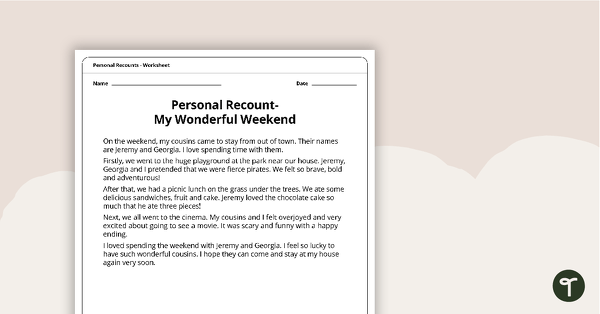
Personal Recounts Worksheet - My Wonderful Weekend
A simple text and worksheet to use when exploring personal recounts.
- Plus Plan
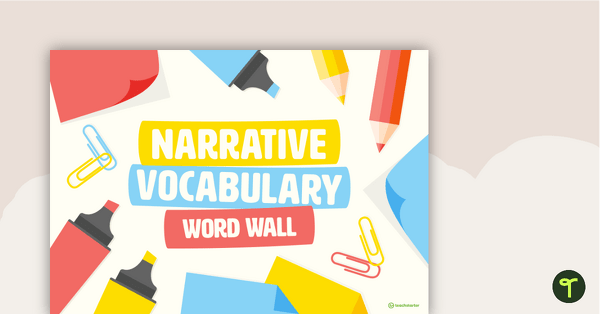
Narrative Vocabulary Word Wall
A set of words to help your students when writing narrative texts.
- Free Plan
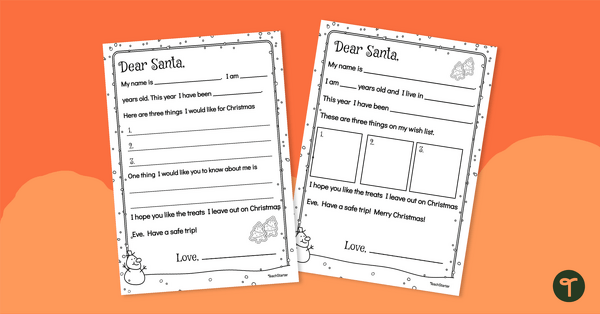
Dear Santa Letter Templates
Use a printable Dear Santa Letter template to write fun letters to Santa during your writing classes.
- Plus Plan
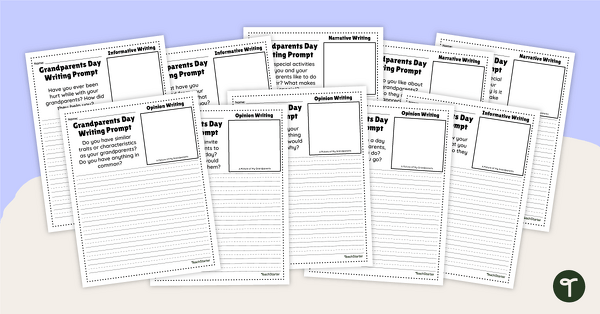
Grandparents Day Writing Prompts
Combine your writing lessons and Grandparents Day with this set of writing prompt worksheets.
- Plus Plan
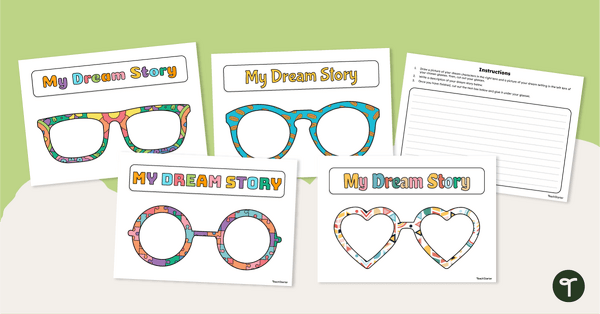
My Dream Story Writing Prompt Template
Dream up some great stories using this creative story-writing prompt.
- Plus Plan
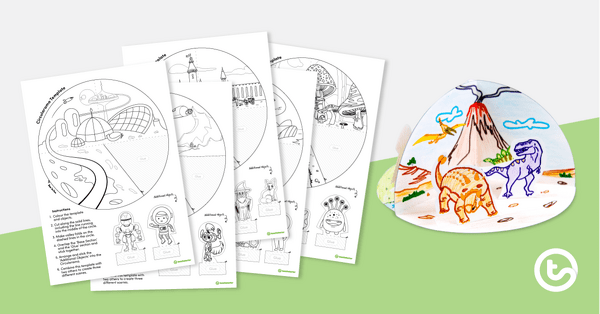
Narrative Setting Circularama Templates
A set of circular diorama templates that combine to create three scenes.
- Plus Plan
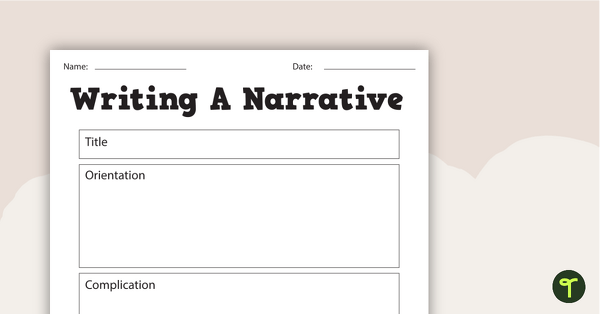
Fairy Tales Narrative Writing Pack
A fairy tale themed narrative writing teaching pack containing 8 worksheets and posters.
- Plus Plan
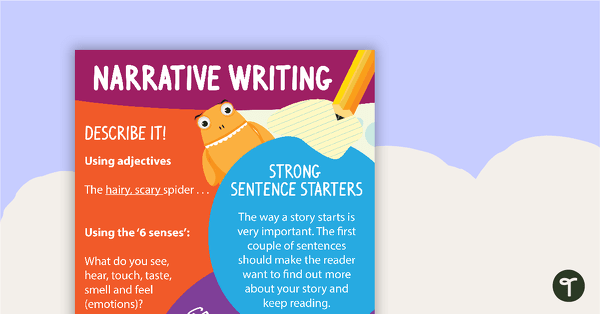
Narrative Writing Poster
A poster to encourage your students to think about narrative writing.
- Plus Plan
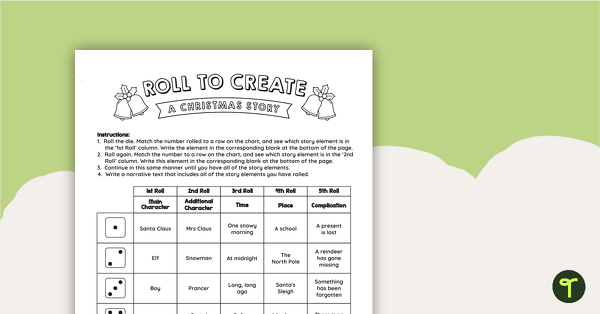
Roll to Create a Christmas Story - Writing Prompt
Roll the die to generate a fun Christmas writing activity with a roll-to-create Christmas worksheet.
- Plus Plan
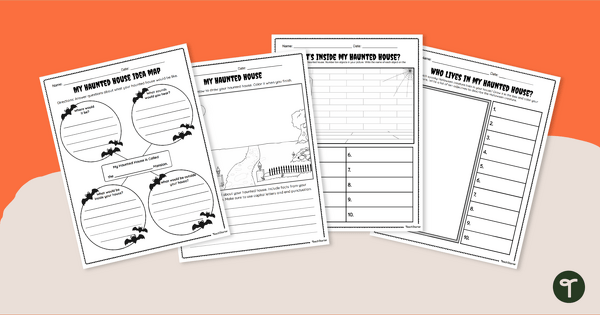
Haunted House Worksheets - Descriptive Writing Activity
Draw and write about scary Halloween houses with a printable Halloween descriptive writing activity pack.
- Plus Plan
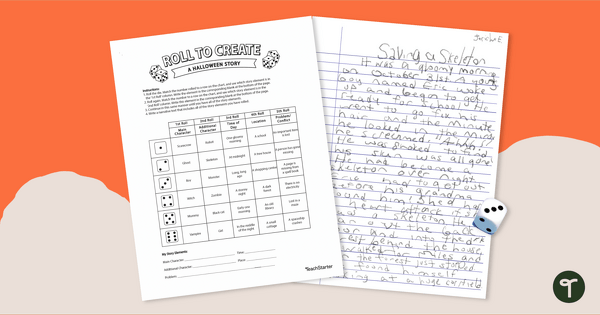
Roll-a-Scary Story Starter - Halloween Writing Prompt
Inspire some spooktacular Halloween writing with a roll-to-create Halloween Writing Prompt creator.
- Plus Plan
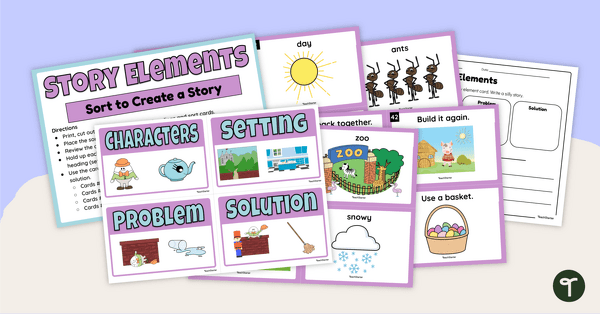
Create a Silly Story – Sorting Activity
Explore story characters, settings, problems and solutions by creating a silly story!
- Plus Plan
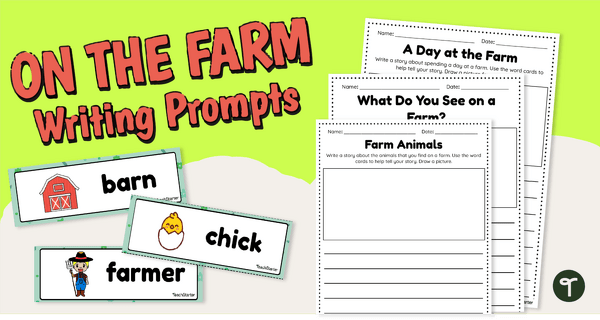
Farm-Themed Flashcards and Writing Prompts
Build vocabulary and writing skills with this ocean-themed writing activity.
- Free Plan
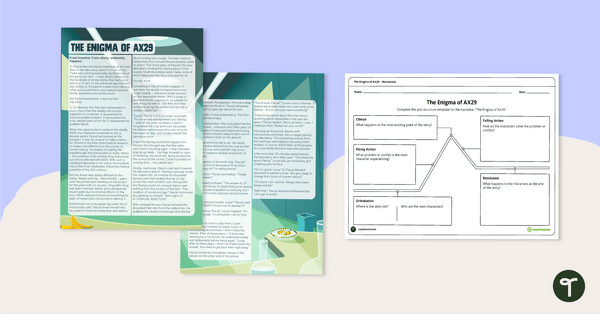
The Enigma of AX29 - Narrative Plot Worksheet
Explore the features of narrative plot structure with this gripping science fiction story.
- Plus Plan
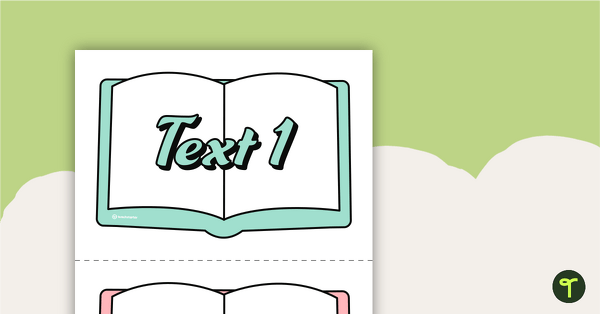
Narrative Writing Bump It Up Wall – Year 1
A visual display for your classroom to help students ‘bump up’ their narrative writing.
- Plus Plan
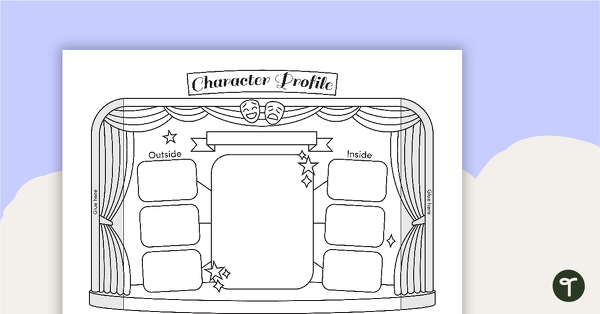
Book Character Profile - Stage and Curtains
A fun book character profile worksheet set on a stage.
- Plus Plan
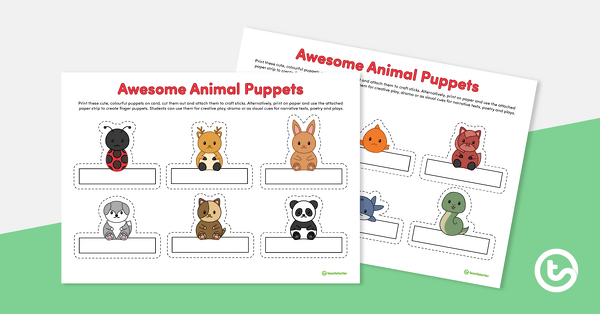
Adorable Animal Finger Puppets Template
Download a set of 12 animal finger puppets to use when teaching poetry, creating narratives and more.
- Plus Plan
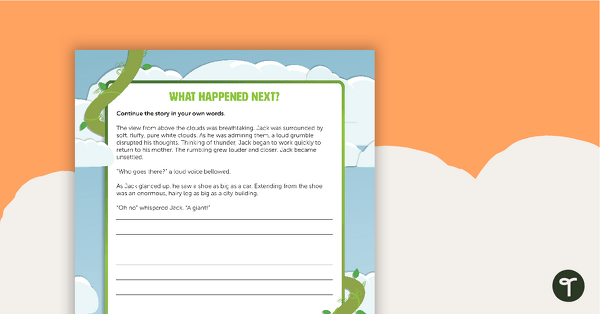
What Happened Next? Jack and the Beanstalk Writing Template
Finish the Jack and the Beanstalk story in your own words.
- Plus Plan
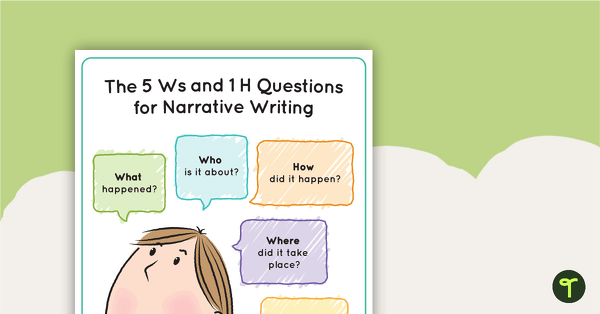
The 5 Ws and 1 H Questions for Narrative Writing Poster
A 5 Ws and 1 H poster to display in the classroom.
- Plus Plan
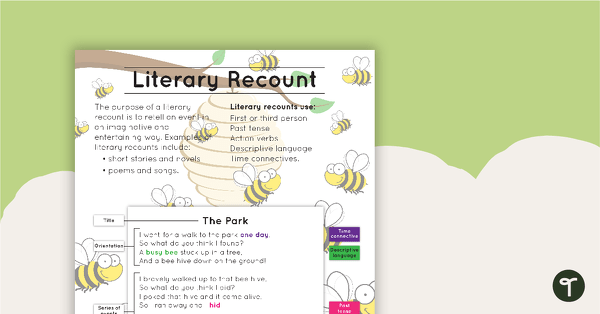
Literary Recount Text Type Poster With Annotations
A poster about literary recounts, including an annotated example.
- Plus Plan
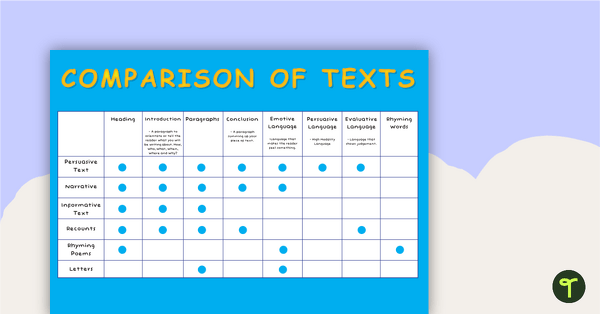
Comparison of Text Types Posters
A poster comparing the structure and language features of various text types.
- Plus Plan
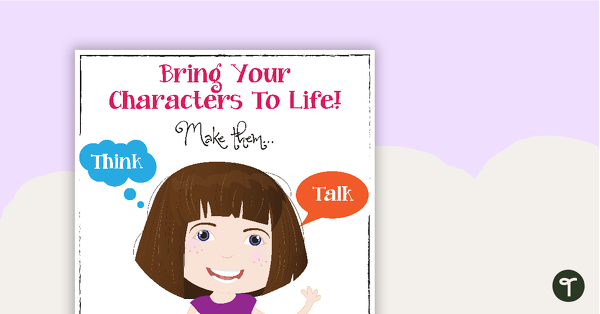
Bring Your Characters To Life Poster
A poster to remind your students to add detail and description to their writing to bring their characters to life.
- Plus Plan
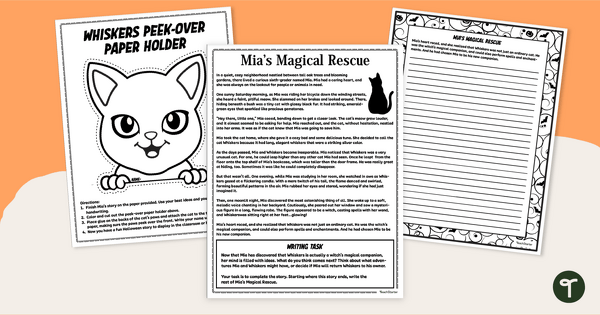
Halloween Narrative Writing Prompts — Finish the Story Writing Activity
Use this printable 'Finish the Story' writing prompt and craft to develop narrative writing skills this Halloween season.
- Plus Plan
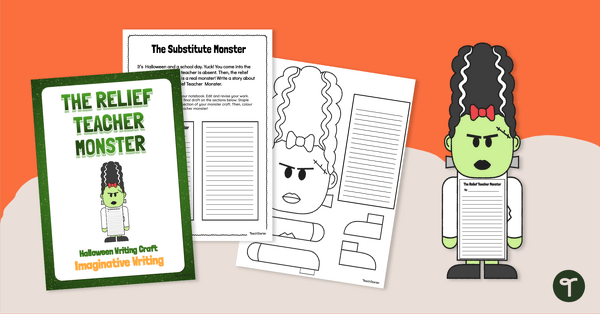
The Relief Teacher Monster - Halloween Craft and Write
This Halloween, inspire your struggling writers to write toe-curling tales of a day spent with a Relief Teacher Monster!
- Plus Plan
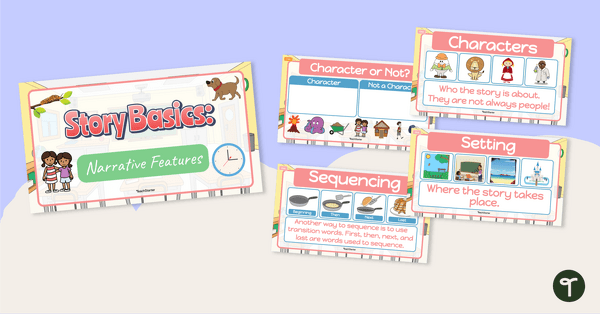
Story Basics: Narrative Features - Teaching Presentation
Use this interactive teaching presentation to introduce your early years students to the basic features of stories.